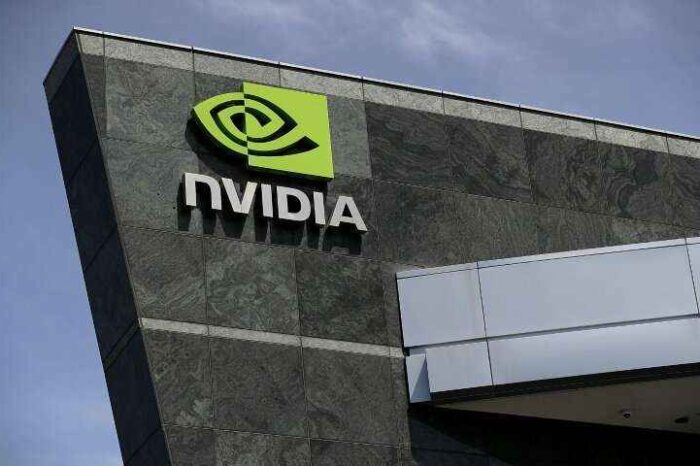Top jobs most at risk of being replaced by AI, according to Microsoft

Back in March, Bill Gates made headlines when he said AI could replace most human jobs within the next decade. The affected roles go beyond blue-collar work and include professions like doctors and teachers. That wasn’t a wild prediction from the sidelines. Now, Microsoft itself is backing it up with fresh data.
The tech giant has released a new study ranking which jobs are most vulnerable to being taken over by AI. Using what it calls “AI applicability scores,” the report identifies the top 40 roles at risk — and it’s not just factory workers or data entry clerks. High on the list are jobs that involve language and communication: Interpreters, Translators, Telephone Operators, and even Historians. These roles scored high on coverage, completion, and scope — factors Microsoft used to assess how much of a job could realistically be done by AI.
Microsoft’s scoring also factored in how widely AI is already used in each job, how well it performs, and how much of the overall work AI could take over.
The data shows that tasks involving written or spoken language and jobs in customer service are on the chopping block. On the flip side, roles that require physical skill or machine operation appear safer — at least for now.
At the very top of the list: Interpreters and Translators, who scored a near-perfect 0.98 on coverage. That role supports more than 51,000 workers in the U.S. alone. Telephone Operators followed with a score of 0.80, though fewer than 5,000 people still hold that job today. Other high-risk roles include Sales Reps for Services (over 1.1 million employed) and Mathematicians — a field that might sound safe but ranked surprisingly high.
The study paints a clear picture: the AI wave won’t just disrupt repetitive or low-wage jobs. It’s coming for white-collar roles that involve information, communication, and analysis. From CNC Tool Programmers to Concierges, few sectors are off-limits.
Below is the full list of the top 40 jobs most at risk of being replaced by AI, according to Microsoft. The higher the score, the more vulnerable the job.
Top 40 Jobs To Be Replaced by AI
1. Interpreters and translators (Score: 0.49, Number employed: 51,560)
Interpreters and translators convert languages in live or written settings, requiring fluency and expertise. Vital in global contexts like courts and healthcare, they face AI risks (0.98 coverage) per Microsoft’s 2025 report. With 51,560 jobs, their human nuance in capturing cultural subtleties remains key, necessitating adaptation with tech.
2. Historians (Score: 0.48, Number employed: 3,040)
Historians research and interpret past events using records and artifacts, working in academia or museums. Microsoft’s 2025 study (0.91 coverage) highlights AI risks for 3,040 jobs. Their analytical depth persists, requiring adaptation with digital tools to maintain relevance in education and cultural preservation.
3. Passenger attendants (Score: 0.47, Number employed: 20,190)
Passenger attendants ensure safety and comfort on flights or trains, assisting travelers with boarding and emergencies. Microsoft’s 2025 report (0.80 coverage) flags AI automation risks for 20,190 jobs. Their human empathy and quick decision-making stand out, requiring training in tech-assisted roles to adapt.
4. Sales representatives of services (Score: 0.46, Number employed: 1,142,020)
Sales reps promote services, building client relationships across 1,142,020 jobs. With 0.84 coverage in Microsoft’s 2025 study, AI threatens automation. Their persuasion and trust-building skills are key, necessitating continuous training and tech integration to remain competitive in sales sectors.
5. Writers and authors (Score: 0.45, Number employed: 49,450)
Writers and authors craft books, scripts, and articles, employing creativity across 49,450 jobs. Microsoft’s 2025 report (0.85 coverage) notes AI risks. Their unique voice and narrative skill differentiate them, requiring adaptation to digital platforms or niche genres to thrive.
6. Customer service representatives (Score: 0.44, Number employed: 2,858,710)
Customer service reps handle inquiries and resolve issues for 2,858,710 jobs. With 0.72 coverage per Microsoft’s 2025 study, AI poses automation threats. Their empathy and problem-solving skills shine, demanding training in tech tools and emotional intelligence to adapt.
7. CNC tool programmers (Score: 0.44, Number employed: 28,030)
CNC tool programmers code machines for manufacturing, supporting 28,030 jobs. Microsoft’s 2025 report (0.90 coverage) highlights AI risks. Their precision and technical expertise are vital, requiring upskilling in advanced programming or oversight roles as automation advances.
8. Telephone operators (Score: 0.42, Number employed: 4,600)
Telephone operators manage switchboards, assisting 4,600 callers. With 0.80 coverage in Microsoft’s 2025 study, AI replacement risks loom. Their personal touch in communication remains valuable, necessitating adaptation through tech support or specialized roles in a digital era.
9. Ticket agents and travel clerks (Score: 0.41, Number employed: 119,270)
Ticket agents and travel clerks sell tickets and assist travelers, employing 119,270. Microsoft’s 2025 report (0.71 coverage) signals AI threats. Their customer service skills are key, requiring training in online systems and niche travel advice to adapt.
10. Broadcast announcers and radio DJs (Score: 0.41, Number employed: 25,070)
Broadcast announcers and DJs deliver news or music, engaging 25,070 listeners. With 0.74 coverage per Microsoft’s 2025 study, AI risks emerge. Their charisma and live interaction stand out, demanding adaptation with digital media or podcasting as AI grows.
11. Brokerage clerks (Score: 0.41, Number employed: 48,060)
Brokerage clerks perform clerical tasks in financial firms, supporting 48,060 jobs. Microsoft’s 2025 report (0.74 coverage) flags AI automation risks. Their attention to detail and accuracy shine, requiring upskilling in financial software or analytics to stay competitive in a tech-driven market.
12. Farm and home management educators (Score: 0.41, Number employed: 8,110)
Educators teach farming and home skills, employing 8,110. With 0.77 coverage in Microsoft’s 2025 study, AI poses challenges. Their hands-on guidance remains unique, necessitating adaptation through online courses or sustainable practices as technology advances.
13. Telemarketers (Score: 0.40, Number employed: 81,580)
Telemarketers sell products over the phone, supporting 81,580 jobs. Microsoft’s 2025 report (0.66 coverage) highlights AI replacement risks. Their persuasive skills stand out, requiring a shift to digital sales or customer retention roles to survive automation.
14. Concierges (Score: 0.40, Number employed: 41,020)
Concierges assist guests with reservations or local info, employing 41,020. With 0.70 coverage per Microsoft’s 2025 study, AI threatens automation. Their personalized service shines, demanding training in tech tools and niche expertise to adapt in hospitality.
15. Political scientists (Score: 0.39, Number employed: 5,580)
Political scientists study systems and policies, engaging 5,580. Microsoft’s 2025 report (0.77 coverage) notes AI risks. Their analytical depth remains key, requiring adaptation with data tools or policy advising to secure their academic role.
16. News analysts, reporters, journalists (Score: 0.39, Number employed: 45,020)
Journalists gather and report news, employing 45,020. With 0.81 coverage in Microsoft’s 2025 study, AI poses challenges. Their investigative insight stands out, necessitating a shift to multimedia or in-depth reporting to adapt to automation.
17. Mathematicians (Score: 0.39, Number employed: 2,220)
Mathematicians research theories, supporting 2,220 jobs. Microsoft’s 2025 report (0.91 coverage) flags AI threats. Their complex problem-solving shines, requiring specialization in emerging fields like AI development to remain relevant.
18. Technical writers (Score: 0.38, Number employed: 47,970)
Technical writers create manuals and documentation, employing 47,970. With 0.83 coverage per Microsoft’s 2025 study, AI risks emerge. Their clarity and expertise stand out, demanding adaptation with tech editing or niche topics.
19. Proofreaders and copy markers (Score: 0.38, Number employed: 5,490)
Proofreaders edit content, supporting 5,490 jobs. Microsoft’s 2025 report (0.91 coverage) signals AI automation. Their meticulous eye remains key, requiring upskilling in digital publishing or quality control to adapt.
20. Hosts and hostesses (Score: 0.37, Number employed: 425,020)
Hosts welcome guests in restaurants, employing 425,020. With 0.60 coverage in Microsoft’s 2025 study, AI risks loom. Their warmth and hospitality shine, necessitating training in event management or tech integration to thrive.
21. Editors (Score: 0.37, Number employed: 93,700)
Editors revise content for publication, engaging 93,700 professionals. Microsoft’s 2025 report (0.78 coverage) highlights AI risks. Their judgment and narrative refinement stand out, requiring adaptation with digital editing or content curation to remain relevant in media.
22. Business teachers, postsecondary (Score: 0.37, Number employed: 82,980)
Business teachers educate at colleges, employing 82,980. With 0.70 coverage per Microsoft’s 2025 study, AI poses challenges. Their mentorship and practical insights shine, necessitating tech integration in teaching to adapt to evolving educational demands.
23. Public relations specialists (Score: 0.36, Number employed: 275,550)
PR specialists manage communication, supporting 275,550 jobs. Microsoft’s 2025 report (0.63 coverage) notes AI risks. Their creativity and strategic thinking stand out, requiring adaptation with digital campaigns to thrive in a tech-driven landscape.
24. Demonstrators and product promoters (Score: 0.36, Number employed: 50,790)
Promoters showcase products, employing 50,790. With 0.66 coverage in Microsoft’s 2025 study, AI threatens automation. Their engaging presence shines, demanding training in virtual demos to adapt to technological shifts.
25. Advertising sales agents (Score: 0.36, Number employed: 108,100)
Agents sell ad space, supporting 108,100 jobs. Microsoft’s 2025 report (0.60 coverage) flags AI risks. Their negotiation skills stand out, requiring digital sales training to stay competitive as automation grows.
26. New accounts clerks (Score: 0.36, Number employed: 41,180)
New accounts clerks open bank accounts, employing 41,180. With 0.72 coverage per Microsoft’s 2025 study, AI looms. Their customer focus shines, necessitating adaptation with fintech tools to remain relevant.
27. Statistical assistants (Score: 0.36, Number employed: 7,200)
Statistical assistants analyze data, supporting 7,200 jobs. Microsoft’s 2025 report (0.85 coverage) highlights AI challenges. Their precision stands out, requiring upskilling in analytics software to adapt in data-driven fields.
28. Counter and rental clerks (Score: 0.36, Number employed: 390,300)
Clerks handle transactions, employing 390,300. With 0.62 coverage in Microsoft’s 2025 study, AI risks emerge. Their service skills shine, demanding training in online systems to adapt to tech advancements.
29. Data scientists (Score: 0.36, Number employed: 192,710)
Data scientists interpret data, engaging 192,710. Microsoft’s 2025 report (0.77 coverage) notes AI competition. Their insight stands out, requiring specialization in AI tools to maintain a competitive edge.
30. Personal financial advisors (Score: 0.35, Number employed: 272,190)
Advisors guide investments, supporting 272,190 jobs. With 0.69 coverage per Microsoft’s 2025 study, AI poses risks. Their trust-building skills shine, necessitating adaptation with robo-advisor oversight to thrive.
31. Archivists (Score: 0.35, Number employed: 7,150)
Archivists preserve historical records, employing 7,150. Microsoft’s 2025 report (0.66 coverage) highlights AI risks. Their expertise in organizing and protecting documents stands out, requiring digital archiving skills to adapt as technology transforms preservation efforts.
32. Economics teachers, postsecondary (Score: 0.35, Number employed: 12,210)
Economics teachers educate at colleges, supporting 12,210 jobs. With 0.68 coverage per Microsoft’s 2025 study, AI challenges arise. Their guidance on economic principles shines, necessitating tech integration in teaching to stay relevant.
33. Web developers (Score: 0.35, Number employed: 88,350)
Web developers design and maintain sites, employing 88,350. Microsoft’s 2025 report (0.73 coverage) notes AI risks. Their creative and technical skills stand out, requiring upskilling in AI tools to remain competitive in a digital landscape.
34. Management analysts (Score: 0.35, Number employed: 838,140)
Analysts improve organizational efficiency, engaging 838,140. With 0.68 coverage in Microsoft’s 2025 study, AI poses threats. Their strategic insights shine, demanding adaptation with data analytics to thrive in consulting.
35. Geographers (Score: 0.35, Number employed: 1,460)
Geographers study Earth’s features, supporting 1,460 jobs. Microsoft’s 2025 report (0.77 coverage) flags AI risks. Their research and mapping skills stand out, requiring GIS technology mastery to adapt in environmental fields.
36. Models (Score: 0.35, Number employed: 3,090)
Models pose for art or fashion, employing 3,090. With 0.64 coverage per Microsoft’s 2025 study, AI threatens automation. Their unique physical presence shines, necessitating virtual modeling skills to adapt to tech shifts.
37. Market research analysts (Score: 0.35, Number employed: 846,370)
Analysts study markets, supporting 846,370 jobs. Microsoft’s 2025 report (0.71 coverage) notes AI competition. Their market insight stands out, requiring data tool mastery to maintain relevance in business strategy.
38. Public safety telecommunications (Score: 0.35, Number employed: 97,820)
Operators handle emergencies, employing 97,820. With 0.60 coverage in Microsoft’s 2025 study, AI risks emerge. Their calm and quick response shines, demanding tech training to adapt in crisis communication.
39. Switchboard operators (Score: 0.35, Number employed: 43,830)
Switchboard operators connect calls, supporting 43,830 jobs. Microsoft’s 2025 report (0.68 coverage) signals AI threats. Their service skills stand out, requiring a shift to digital support roles to survive automation.
40. Library science teachers, postsecondary (Score: 0.34, Number employed: 4,220)
Teachers educate on library science, employing 4,220. With 0.65 coverage per Microsoft’s 2025 study, AI challenges loom. Their expertise in information management shines, necessitating digital literacy training to adapt.
Table: Top 40 Jobs Most at Risk of Being Replaced by AI
| Job Title (Abbrv.) | Coverage | Cmplt. | Scope | Score | Employment |
| Interpreters and Translators | 0.98 | 0.88 | 0.57 | 0.49 | 51,560 |
| Historians | 0.91 | 0.85 | 0.56 | 0.48 | 3,040 |
| Passenger Attendants | 0.80 | 0.88 | 0.62 | 0.47 | 20,190 |
| Sales Representatives of Services | 0.84 | 0.90 | 0.57 | 0.46 | 1,142,020 |
| Writers and Authors | 0.85 | 0.84 | 0.60 | 0.45 | 49,450 |
| Customer Service Representatives | 0.72 | 0.90 | 0.59 | 0.44 | 2,858,710 |
| CNC Tool Programmers | 0.90 | 0.87 | 0.53 | 0.44 | 28,030 |
| Telephone Operators | 0.80 | 0.86 | 0.57 | 0.42 | 4,600 |
| Ticket Agents and Travel Clerks | 0.71 | 0.90 | 0.56 | 0.41 | 119,270 |
| Broadcast Announcers and Radio DJs | 0.74 | 0.84 | 0.60 | 0.41 | 25,070 |
| Brokerage Clerks | 0.74 | 0.89 | 0.57 | 0.41 | 48,060 |
| Farm and Home Management Educators | 0.77 | 0.91 | 0.55 | 0.41 | 8,110 |
| Telemarketers | 0.66 | 0.89 | 0.60 | 0.40 | 81,580 |
| Concierges | 0.70 | 0.88 | 0.56 | 0.40 | 41,020 |
| Political Scientists | 0.77 | 0.87 | 0.53 | 0.39 | 5,580 |
| News Analysts, Reporters, Journalists | 0.81 | 0.81 | 0.58 | 0.39 | 45,020 |
| Mathematicians | 0.91 | 0.74 | 0.54 | 0.39 | 2,220 |
| Technical Writers | 0.83 | 0.82 | 0.54 | 0.38 | 47,970 |
| Proofreaders and Copy Markers | 0.91 | 0.86 | 0.49 | 0.38 | 5,490 |
| Hosts and Hostesses | 0.60 | 0.90 | 0.57 | 0.37 | 425,020 |
| Editors | 0.78 | 0.82 | 0.54 | 0.37 | 93,700 |
| Business Teachers, Postsecondary | 0.70 | 0.90 | 0.52 | 0.37 | 82,980 |
| Public Relations Specialists | 0.63 | 0.90 | 0.60 | 0.36 | 275,550 |
| Demonstrators and Product Promoters | 0.66 | 0.88 | 0.53 | 0.36 | 50,790 |
| Advertising Sales Agents | 0.60 | 0.90 | 0.53 | 0.36 | 108,100 |
| New Accounts Clerks | 0.72 | 0.87 | 0.51 | 0.36 | 41,180 |
| Statistical Assistants | 0.85 | 0.84 | 0.49 | 0.36 | 7,200 |
| Counter and Rental Clerks | 0.62 | 0.90 | 0.52 | 0.36 | 390,300 |
| Data Scientists | 0.77 | 0.86 | 0.51 | 0.36 | 192,710 |
| Personal Financial Advisors | 0.69 | 0.88 | 0.52 | 0.35 | 272,190 |
| Archivists | 0.66 | 0.88 | 0.49 | 0.35 | 7,150 |
| Economics Teachers, Postsecondary | 0.68 | 0.90 | 0.51 | 0.35 | 12,210 |
| Web Developers | 0.73 | 0.86 | 0.51 | 0.35 | 88,350 |
| Management Analysts | 0.68 | 0.90 | 0.54 | 0.35 | 838,140 |
| Geographers | 0.77 | 0.83 | 0.48 | 0.35 | 1,460 |
| Models | 0.64 | 0.89 | 0.53 | 0.35 | 3,090 |
| Market Research Analysts | 0.71 | 0.90 | 0.52 | 0.35 | 846,370 |
| Public Safety Telecommunications | 0.60 | 0.88 | 0.53 | 0.35 | 97,820 |
| Switchboard Operators | 0.68 | 0.86 | 0.52 | 0.35 | 43,830 |
| Library Science Teachers, Postsecondary | 0.65 | 0.90 | 0.51 | 0.34 | 4,220 |
This table compiles the data from Microsoft’s study, showing the potential AI impact across a range of occupations.
You can download a PDF version of the Microsoft study below.
2507.07935v3



